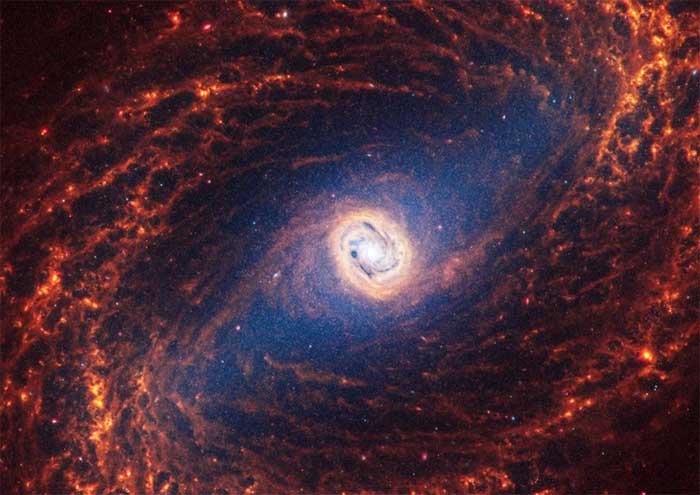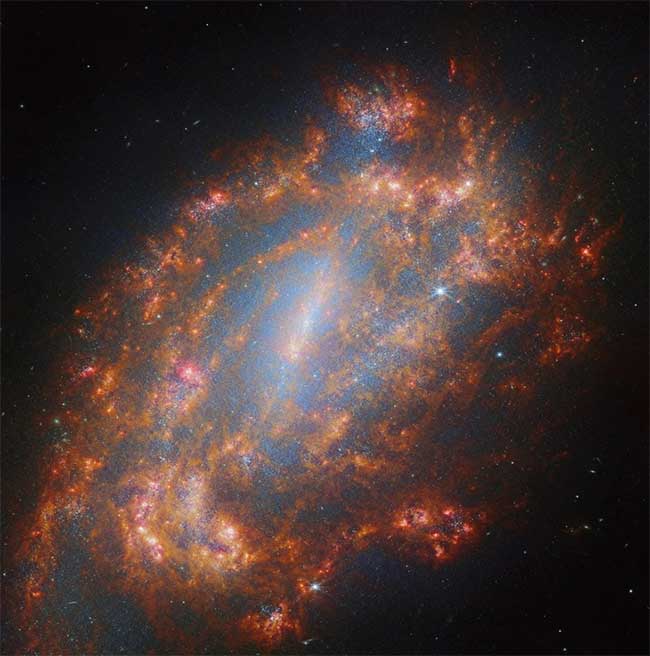Spectacular set of images of galaxies and nebulae taken by James Webb telescope
The James Webb Space Telescope captures many stunning images of galaxies and nebulae, opening up many opportunities for research and discovery.

Globular cluster NGC 6440 orbits the central galactic bulge - a dense concentration of stars - of the Milky Way. Observing dense star clusters was a challenge until the James Webb space telescope appeared - (Image: ESA/Webb, NASA & CSA, P. Freire).
Since its launch on December 25, 2021, the James Webb space telescope, now more than 1.6 million kilometers from Earth, has provided groundbreaking insights into the history of our universe. we.
This year, James Webb helped measure tiny fluctuations in the brightness of the Jupiter-sized hot gas giant WASP-43b, capturing the birth of stars, finding evidence of a neutron star in a fiery supernova remnant and brings new insights to researchers about spiral galaxies with wavy arms.
Popular Science page has collected 8 images taken by James Webb of favorite galaxies and nebulae in 2024 (as of May 2024), capturing the awe-inspiring splendor of endless space.

Inside the Large Magellanic Cloud (a satellite galaxy of the Milky Way) lies N79 , a massive star-forming complex. N79 produces stars at an impressive rate, much faster than similar regions in our galaxy - (Image: ESA/Webb, NASA & CSA, O. Nayak, M. Meixner).

At the center of I Zwicky 18 are two bouts of star formation. This dwarf irregular galaxy was first identified in the 1930s, but scientists are using Webb's resolution and sensitivity in the infrared to observe I Zwicky 18 more closely and study its life cycle. of stars - (Image: ESA/Webb, NASA, CSA, A. Hirschauer, M. Meixner et al.).

About 32 million light-years from Earth is NGC 1433 , a spiral galaxy with a bright center - (Image: NASA, ESA, CSA).

The James Webb Space Telescope has captured the sharpest infrared images ever of the "mane" of the Horsehead Nebula . Inside its grey-blue cloud, young stars can be seen twinkling - (Image: NASA, ESA, CSA, Karl Misselt (University of Arizona), Alain Abergel (AIM Paris-Saclay) STScI, Janice Lee (STScI), Thomas Williams (Oxford), PHANGS group).

Hot, massive stars in the early stages of their lives are hidden in the dust of NGC 604. This star-forming region is located in the Triangle galaxy, 2.73 million light years away - (Image: NASA, ESA, CSA, STScI).

Hidden behind a large amount of dust, the James Webb space telescope captured young stars in the giant arm of NGC 1559 , a spiral galaxy 35 million light-years from Earth - (Image: ESA/ Webb, NASA & CSA, A. Leroy, J. Lee and the PHANGS Team).

Data from the Hubble and James Webb space telescopes were combined to image NGC 5468 , a galaxy located about 130 million light-years from Earth - (Image: Webb NIRCam Hubble WFC3).
- Hundreds of distant galaxies seen through the James Webb . telescope
- Unique images in the universe from the James Webb telescope
- NASA finished assembling $ 9.7 billion telescope
- James Webb telescope completes final test, set to launch in October
- James Webb telescope reveals the truth about the planet from nowhere, where sand turns to clouds
- NASA reversed the time of launching the James Webb space telescope until 2020
- 'The eye' of the gold machine looks back past 13.5 billion years
- Telescope James Webb will search for alien life
- NASA has postponed the world's most powerful space telescope
- The James Webb Space Telescope will be launched into orbit in October 2018
- NASA hides technology on telescopes looking backwards
- Image of the James Webb telescope seen from Earth
 The 11 most unique public toilets in the world
The 11 most unique public toilets in the world Explore the ghost town in Namibia
Explore the ghost town in Namibia Rare historical moments are 'colored', giving us a clearer view of the past
Rare historical moments are 'colored', giving us a clearer view of the past The world famous ghost ship
The world famous ghost ship